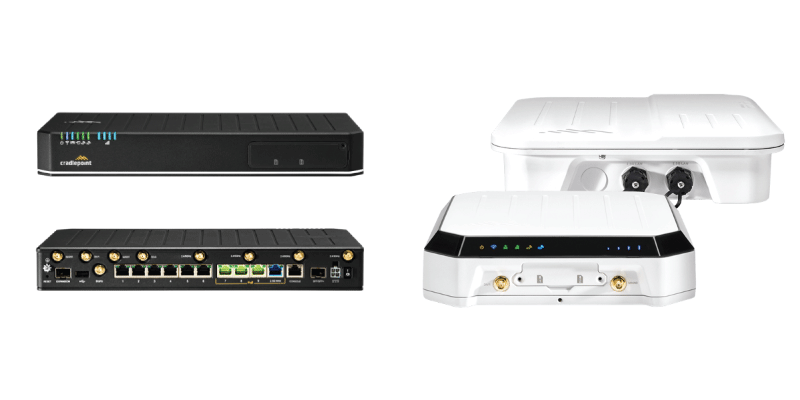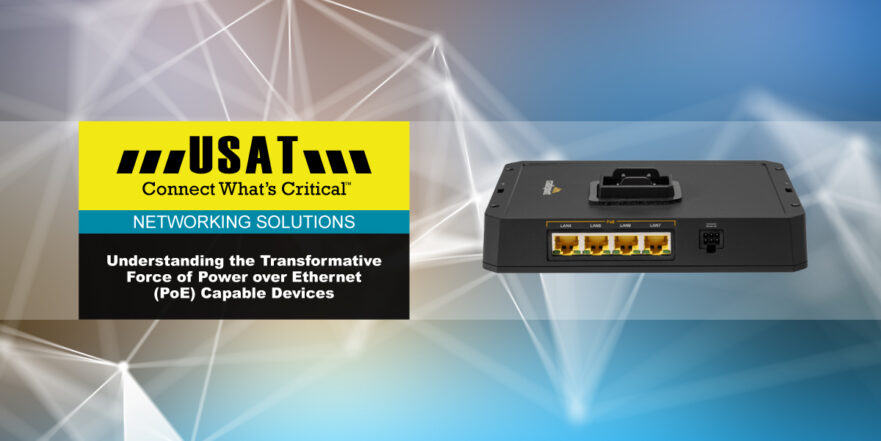PoE Is A Transformative Force For Both Residential and Commercial Use
The world of networking continues to evolve, offering innovative solutions that streamline connectivity and power distribution. One such advancement is Power over Ethernet (PoE), a technology that revolutionizes wired Ethernet local area networks (LANs) by enabling devices to draw power through Ethernet data cables instead of conventional electrical wiring.
Since its invention in the late 1990s, PoE has emerged as a transformative force in residential and commercial use cases. By using existing Ethernet cabling for both power and data transmission, PoE offers a cost-effective solution that reduces the need for separate electrical wiring. This is particularly advantageous for smart home setups and business premises, where efficiency and convenience are paramount.
When it was initially standardized in 2003, PoE was geared towards powering wireless access points, marking a shift from proprietary solutions to standardized implementation. The transition to standardized PoE has simplified AP installations, especially in challenging locations like ceilings, eliminating the need for complex wiring.
Power over Ethernet revolutionizes network efficiency by merging power and data transmission, enhancing convenience and cost-effectiveness. PoE's diverse applications, from smart homes to industrial installations, underscore its impact on modern networking solutions. Understanding the nuances of various PoE standards enables one to make informed decisions to optimize network performance and energy efficiency.
How Does PoE Work?
PoE integrates electrical current into Ethernet data cables, with a clear demarcation between power and data signals. The process involves an injector that introduces current into the Ethernet cable and the device end, where a compatible device can function seamlessly. For non-compatible devices, a picker is added to extract current from the cable, which is then directed to the power jack.
Initially, devices conforming to the 2003 PoE standard fulfilled power requirements for most access points (APs), yet fell short in powering other mounted technologies, like video surveillance cameras. In response, the Institute of Electrical and Electronics Engineers (IEEE) and various industry players endeavored to address power limitations, though challenges in interoperability endured.
PoE caters to a diverse array of devices consuming 30 watts (W) or less, including:
- Internet Protocol, voice-over IP, and video telephones
- Worldwide Interoperability for Microwave Access (WiMAX) and wireless AP devices or nodes
- Pan, tilt, and zoom robotic cameras
- Remote computer terminals, monitors, laptops, thin clients, and large display screens
- Liquid crystal display screens and large TVs
- Door access systems and video signing displays
- Network audio solutions
With the release of IEEE 802.3bt in 2018 - commonly referred to as high-power PoE or PoE+ - the use of four-wire pairs with Cat5 or Cat6 cables has become the standard and caters to individual devices demanding up to 90 to 100 W of power. Devices that thrive under this standard include:
- Light-emitting diode lighting
- Security card readers
- High-performance wireless APs
- Intercoms
- Video conferencing equipment
- Video surveillance cameras
As PoE technology advances, its scope expands to empower an ever-growing range of devices, reshaping the landscape of modern connectivity and power delivery.
What Are The Different PoE Variants?
PoE (Type 1)
PoE+ (Type 2)
PoE++ (Type 3 and Type 4)
Choosing the Right PoE Solution
Cradlepoint PoE Devices
Cradlepoint offers a variety of PoE devices designed to streamline network deployments. Cradlepoint's PoE solutions are highly flexible and configurable, allowing users to tailor power delivery to their specific needs while enhancing network visibility and control with remote monitoring and management support. Cradlepoint's commitment to regular updates and support ensures a reliable and future-proof PoE solution for diverse network applications.
These devices include:
Routers
- Cradlepoint CR4250 Router
- Cradlepoint AER2200 Router
- Cradlepoint E3000 Router
- Cradlepoint R1900 Router
Access Points
Cellular Adapters
- Cradlepoint W2000 Adapter
- Cradlepoint W2005 Adapter
- Cradlepoint W4005 Adapter
- Cradlepoint W1850 Adapter
- Cradlepoint CBA850 Adapter
- Cradlepoint CBA550 Adapter
- Cradlepoint L950 Adapter
Managed Accessory

Benefits of PoE
Time and Cost Savings
Enhanced Flexibility
Ensured Safety
Reliability
Effortless Scalability
Limitations of PoE
Susceptibility to Outages
Power Constraints
Elevated Switch Costs
Limited Transmission Distance
Security Implications
About MCA and Our CNS Team
MCA is one of the largest and most trusted integrators in the United States, offering world-class voice, data, and security solutions that enhance the quality, safety, and productivity of customers, operations, and lives. More than 65,000 customers trust MCA to provide carefully researched solutions for a safe, secure, and more efficient workplace.
Our Cellular Networking Solutions (CNS) team (formerly known as USAT) is made up of certified experts in designing and deploying fixed and mobile wireless data connectivity solutions for public and private enterprises nationwide - complete with implementation, training, proof of concept (POC), system auditing, and on-site RF surveying services with optional engineering maintenance contracts.
Our extensive catalog of world-class routers, gateways, and software designed for remote monitoring and management in even the harshest environments allows us to deliver a full suite of reliable technologies capped with a service-first approach.
Share this Post













